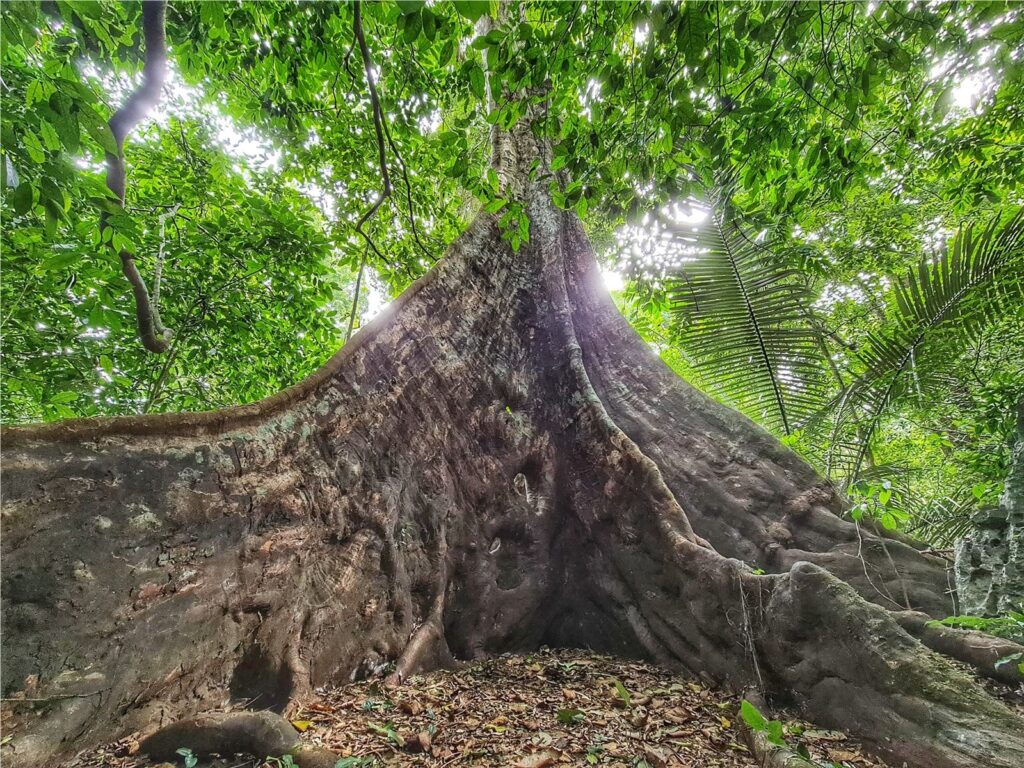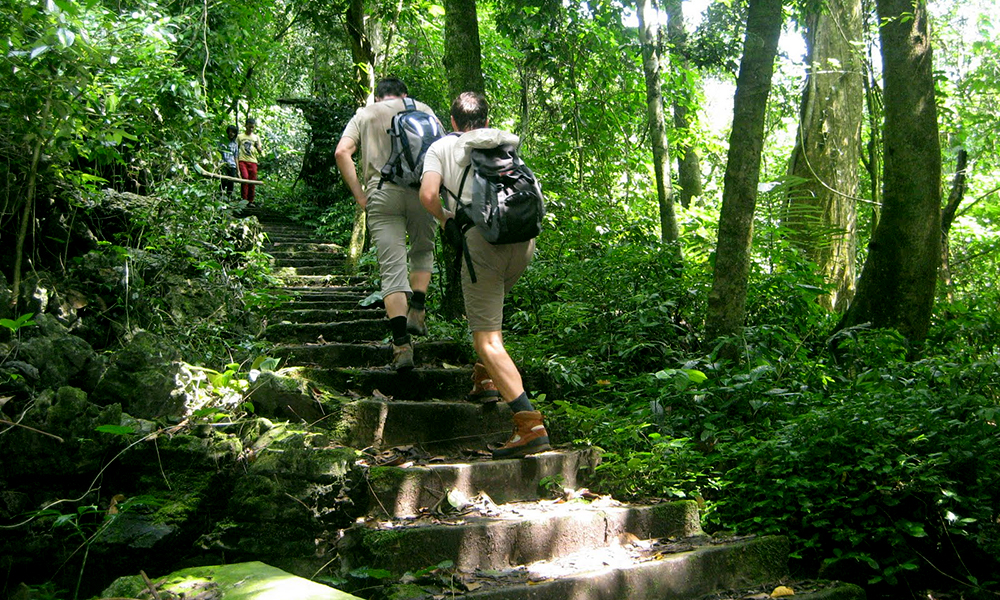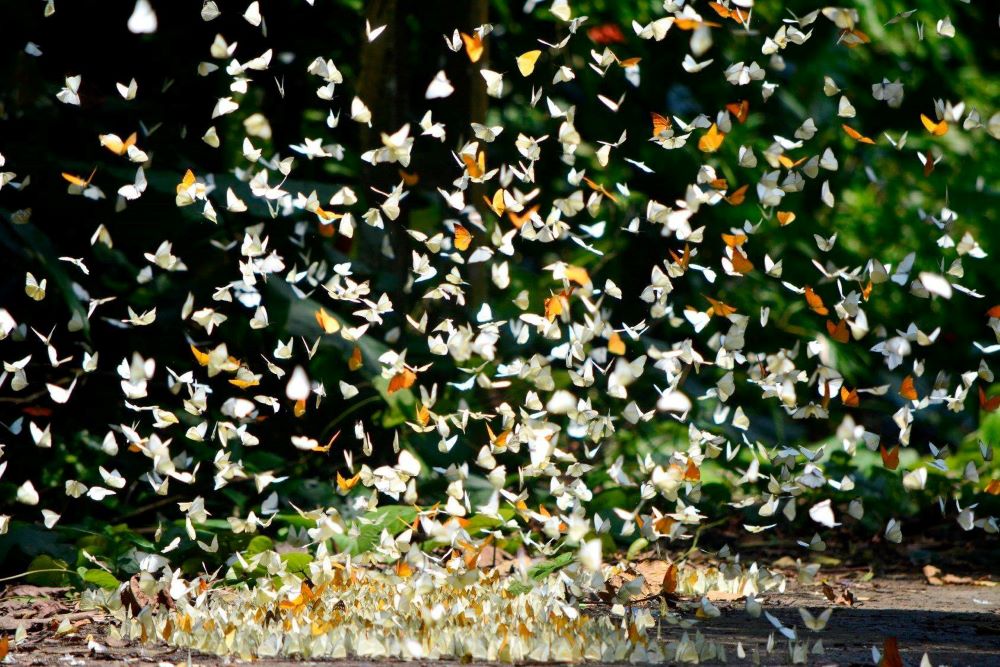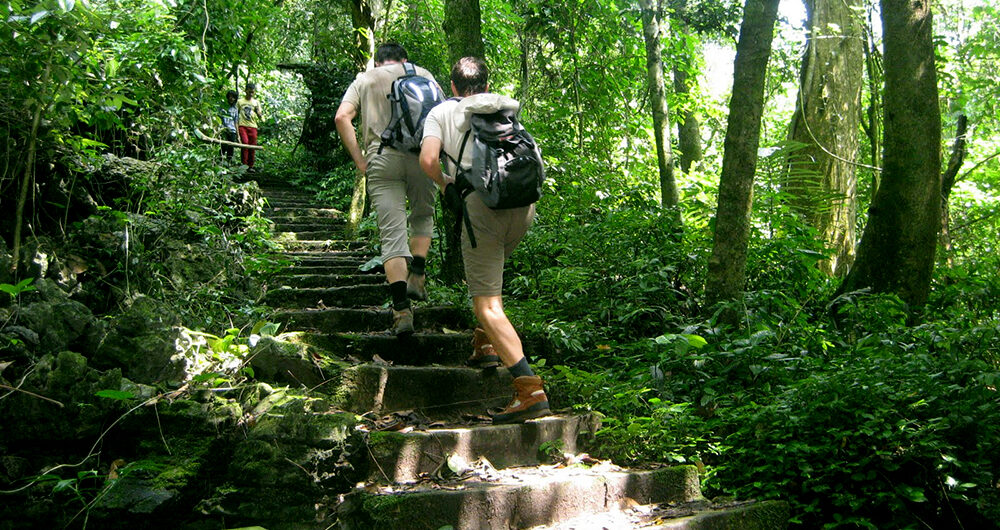Nestled 120 kilometers south of the bustling Hanoi capital, deep within the Tam Diep mountain range, lies a cherished and familiar landscape, this gem is none other than Cuc Phuong National Park, heralded as Vietnam’s inaugural national park.
Established on July 7, 1962, Cuc Phuong sprawls across the provinces of Ninh Binh, Hoa Binh, and Thanh Hoa, enveloping a vast expanse of 22,408 hectares.
Renowned for its rich natural landscapes, diverse ecosystems, and cultural and historical significance, The national park of Cuc Phuong has solidified its reputation as a premier and captivating ecotourism destination.
Biodiversity

Biodiversity thrives within the lush embrace of Cuc Phuong National Park, characterized by its perennial tropical rainforest. This verdant haven boasts an exceptionally rich and varied array of flora and fauna.
Recent survey findings reveal an impressive tally of 2,234 species encompassing higher plants and mosses, with 433 designated as medicinal plants and 229 as edible varieties. Numerous species within Cuc Phuong find a place in Vietnam’s red book, emphasizing their ecological significance.
The realm of animals within Cuc Phuong is equally diverse, featuring 122 species of reptiles and amphibians, 66 fish species, nearly 2000 insect species, and 135 mammal species. Among these, the striking white-butted black langur, a rare and beautiful primate, stands out and has been chosen as the symbol of Cuc Phuong National Park.
Notably, the park is a haven for bird enthusiasts, boasting 336 resident bird species, including many endemic to Vietnam and Indochina, rendering Cuc Phuong a cherished destination for avid birdwatchers.
Caste landscape and archaeological value
Casting an intriguing landscape against the backdrop of semi-covered Caste terrain, Cuc Phuong unfolds with an array of captivating caves, each bearing evocative names such as Son Cung Cave and Pho Ma Giang Cave.
Remarkably, some of these caves preserve the ancient traces of prehistoric inhabitants who resided in them approximately 7,500 to 12,000 years ago – prominent among them are Bitter Cave (ancient cave) and Moong Cave.
Adding to its archaeological allure, Cuc Phuong National Park made a significant discovery in 2000: a fossil of a vertebrate animal. Preliminary assessments by the Vietnam Institute of Paleontology suggest that this fossil belongs to a plate-toothed reptile that thrived around 200 to 230 million years ago.
Cultural identity
Steeped in ancient history, Cuc Phuong has long served as the home and habitat of the Muong community, boasting distinctive and characteristic cultural traits. Noteworthy among these are the stilt houses, terraced fields, upland rice mortars, and earthen weaving looms that define the unique architectural landscape.
Moreover, the community’s rich cultural tapestry unfolds through its vibrant festivals, customs, and lifestyle, offering visitors an immersive experience during their village exploration.
Things to do in Cuc Phuong National Park
Trekking

One of the primary attractions of Cuc Phuong National Park is the opportunity for trekking amidst the natural splendor. Various trails cater to different preferences, ranging from short one-hour walks to full-day trekking adventures. The visitor center provides information on diverse trails, leading to caves, villages, rainforests, lakes, and bird-watching spots. Some notable trekking routes include:
- Fauna and Flora Garden: A roughly 3 km trail lasting up to 2 hours.
- Observation Tower: A brief ascent up the mountain offering breathtaking views, taking about 1 hour.
- Cave of Prehistoric Man: A short walk with 220 steps leading to human graves and tools dating back 7500 years, making it one of Vietnam’s oldest human occupation sites.
- Popular walks to a 1000-year-old “old tree” (Tetrameles nudiflora) and an extended four-hour trek to Silver Cloud Peak.
- A longer 15 km (approximately five-hour) walk to Muong village, where visitors can stay overnight with local families and enjoy rafting on the Buoi River.
Tips
- Night camping with wildlife viewing requires a guide, and camping equipment must be rented in Hanoi.
- Maps are available from park staff, but hiring a guide is recommended for day trips and mandatory for longer excursions.
Kayaking
Kayaking is available on both the artificial Mac Lake and the natural Yen Quang Lake, with kayak rentals at the park entrance.
Traditional Music Performance
The Muong minority, residing in Cuc Phuong for generations, shares its unique culture through traditional music performances by local youth living around the park.
Amphibians, Insects, and Reptiles Spotting
Cuc Phuong’s diverse ecosystem is home to numerous endemic species of insects, amphibians, and reptiles, including the green tree frog and stick-insects.
Cycling
Explore Cuc Phuong National Park by biking through the jungle, offering a chance to cover more ground in less time. Mountain bikes are available for rent at the visitor’s center.
Bird Watching

Home to 308 species of rare birds, Cuc Phuong is a birdwatcher’s paradise. Notable birds include the Silver Pheasant, Red-collared Woodpecker, Brown Hornbill, and Bar-bellied Pitta. The best times for bird-watching are early morning or late afternoon.
Wildlife Night-Spotting
Night safaris provide an opportunity to spot elusive park residents such as the Black Giant Squirrel, Indian Flying Squirrel, Samba Deer, Loris, and several small carnivores.
Caves
The park’s limestone formations have given rise to numerous caves, many of which are open for exploration. Notable caves include Thang Khuyet Cave, Con Moong Cave, Pho Ma Cave, and the Cave of Prehistoric Man, where graves containing prehistoric human remains and artifacts were discovered in 1966.
>> Check Northern Vietnam Tour 6 Days with the visit to Cuc Phuong National Park.
What to Bring
Ensure a comfortable trekking experience by packing appropriately. Consider the following essentials:
- Sturdy walking shoes, particularly for slippery paths.
- Ample anti-insect agents to ward off unwanted pests.
- A water bottle to stay hydrated during potentially strenuous walks.
- Optionally, bring along a picnic meal to enjoy at the convenient stone tables along the hiking trails.
Best Time to Visit

Optimal conditions for exploring Cuc Phuong National Park are during the period from October to January.
This timeframe offers a reprieve from mosquitoes and leeches, providing more comfortable trekking experiences with relatively cooler temperatures. However, it’s essential to note that this period coincides with the peak tourist season.
For those seeking to witness the park’s vibrant floral displays, February and March showcase the blossoming flowers, while April and May present a unique spectacle known as the “butterfly festival.” During these months, the forest comes alive with thousands of butterflies, adding a colorful and enchanting touch to the natural surroundings.

